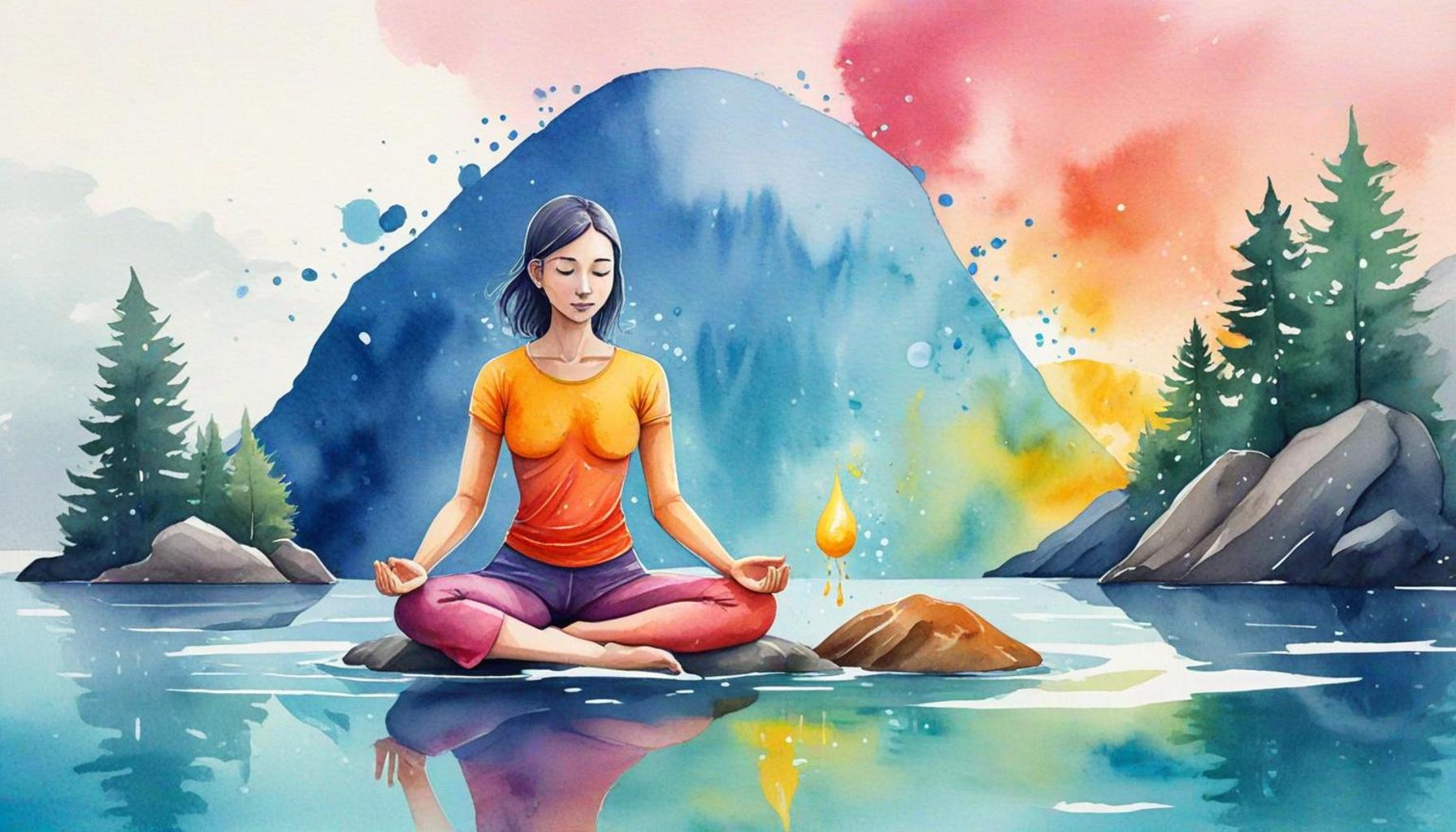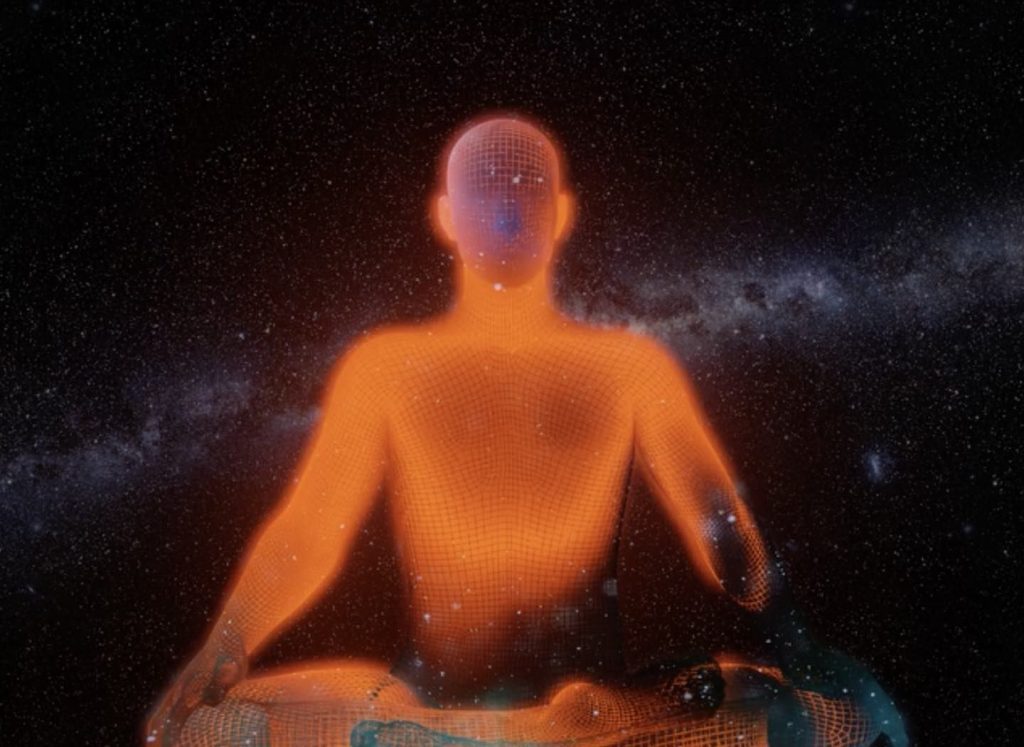The Impact of Water Temperature on Meditation and Emotional Balance

The Subtle Influence of Water Temperature on Mindfulness Practices
Water temperature can have a profound impact on our meditation experiences and emotional states, often without us even being aware of it. When engaging in mindfulness exercises, understanding how temperature of water interacts with our mind and body can be pivotal in achieving emotional balance. For many practitioners, this knowledge can unlock deeper levels of relaxation and focus during meditation. Let’s explore how different water temperatures can affect our mindfulness journey.
Cool Water: Invigoration and Alertness
Using cool water during meditation can serve as a catalyst for invigorating the senses. The refreshing nature of cool water can promote alertness while simultaneously clearing the mind. For example, imagine placing your feet in a gently flowing stream on a warm afternoon in Nigeria, where the coolness envelopes you, heightening your awareness of your surroundings. This practice can lead to a focused meditation session, allowing you to center your thoughts and energy effectively.
Warm Water: Relaxation and Emotional Release
On the flip side, warm water often brings about a soothing effect that can foster relaxation and allow for emotional release. Picture a situation where you might soak in a warm herbal bath infused with traditional Nigerian herbs known for their calming properties. As you immerse yourself in this serene environment, your body gradually unwinds, stress fades away, and you may find yourself reaching deeper levels of mindfulness and reflection. Warm water encourages a sense of well-being that can enhance the meditative experience.
The Power of Contrast Baths
One intriguing practice is the use of contrast baths, which involve alternating between hot and cold water. This technique stimulates circulation and engages the mind, potentially enhancing mood. In Nigeria, where thermal springs and hot baths are culturally significant, you might consider a routine that includes a hot soak followed by a dip in a nearby river or lagoon. The shock and surprise of the temperature change can invigorate both your body and mind, leaving you feeling refreshed and rejuvenated.
Cultural Relevance in Nigeria
In Nigeria, where the climate is often hot, the ability to leverage water temperature in everyday life adds significant value to mindfulness routines. From the rich cultural practices surrounding water healing, such as the use of local herbs in warm baths to rejuvenate the body, to simply enjoying an afternoon by a cool river, there are endless opportunities to incorporate temperature into meditation. The communal aspect of sharing these experiences, whether at the beach or with family, also reinforces social bonds and emotional stability.

As we investigate the relationship between water temperature and mindfulness further, we open a new frontier in understanding how simple elements of nature can profoundly influence our emotional well-being. Engaging more fully with these practices may lead to innovative techniques that not only enhance one’s mental health but also promote a holistic approach to living in harmony with our environment.
Embark on this journey and recognize that the element of water, in all its forms, can be a transformative ally in your quest for peace, balance, and serenity.
LEARN MORE: This related article may interest you
Navigating Water Temperature for Optimal Mindfulness
When it comes to meditation and achieving emotional balance, the concept of water temperature is often overlooked, yet it plays an integral role in elevating one’s practice. The relationship between water temperature and human sensation can profoundly shift our focus, encourage emotional healing, and enhance our meditative experiences. Understanding these relationships can empower practitioners to create a personalized environment that promotes mindfulness and emotional stability.
The Benefits of Cool Water in Meditation
Cool water is not merely refreshing; it serves as a catalyst for enhanced focus and alertness. Engaging with cool water can activate our senses, encouraging us to become acutely aware of each moment. For instance, imagine a meditation session by a serene river in rural Nigeria, where you gently dip your fingertips into the cool flow. This sensation can ground you, helping you feel more present in the moment and acknowledge your thoughts without judgment. Some significant benefits of incorporating cool water into your meditation routine include:
- Improved Circulation: Cool water promotes blood flow, invigorating the body and mind.
- Heightened Awareness: The chill of cool water stimulates the nervous system, enhancing mental clarity.
- Increased Energy: The refreshing properties of cool water can provide a burst of energy, making it easier to engage in mindfulness practices.
Warm Water: The Embrace of Calmness
Conversely, warm water offers a soothing embrace that invites relaxation and emotional release. The calming effects of warmth can ease tension accumulated in the body, making it an ideal element for enhancing meditation. Imagine soaking in a warm bath infused with local herbs such as lemongrass or eucalyptus, which are known for their calming properties. As the warmth envelops you, your mind begins to quieten, fostering a deeper connection to your inner self. Key points to consider when utilizing warm water for emotional balance include:
- Stress Reduction: Warm water helps to reduce muscle tension, facilitating an environment conducive to relaxation.
- Emotional Release: The combination of warmth and stillness can create a space for processing emotions, allowing for healing.
- Enhanced Mindfulness: The soothing effects can deepen your meditation practice, enabling you to access a higher level of serenity.
Holistic Practices with Contrast Baths
In addition to cool and warm water, the practice of contrast baths, which alternate between hot and cold water, can significantly benefit emotional balance. This technique stimulates circulation and invigorates the senses, making it easier to tap into different emotional states. In Nigeria, this practice is often found in thermal baths or natural hot springs where contrasting experiences are culturally embedded. The surprising shift in temperature can energize both body and mind, thereby enhancing mood and mental clarity.
By experimenting with various water temperatures in your mindfulness routine, you enhance not only your meditation practice but also foster a profound connection to your body’s responses and the environment around you. Embrace the subtle yet powerful influence of water temperature in your journey towards achieving emotional balance.
The Impact of Water Temperature on Meditation and Emotional Balance
Water temperature plays a crucial role in enhancing the practice of meditation and promoting emotional balance. By understanding how temperature variations influence the body and mind, practitioners can significantly elevate their meditation experience.One of the primary aspects to consider is how warm water can help in achieving a more relaxed state of being. When meditating in warm water, the body experiences a sensation of weightlessness, which can facilitate a deeper connection between the body and mind. This weightlessness alleviates physical tension, allowing for enhanced focus and enabling the practitioner to immerse themselves fully in their meditation practice. Furthermore, warm water has the added benefit of increasing blood circulation, thereby promoting a state of tranquility that is essential for effective emotional regulation.Conversely, cool water also has its unique benefits during meditation. Practicing mindfulness in cool or cold water can invigorate the body and mind, leading to heightened awareness and alertness. The refreshing properties of cool water stimulate the body’s natural responses and can improve circulation, prompting an invigorating mindset that may enhance clarity and concentration. This can particularly benefit individuals looking for a more focused meditation or those seeking to combat lethargy and emotional heaviness.The emotional balance achieved through these contrasting water temperatures can be profound. Engaging in meditation practices, whether in warm or cool water, can help reduce stress and anxiety, leading to a more grounded emotional state. As practitioners alternate between the two temperatures, they can explore how their emotions fluctuate, allowing them to better understand their feelings and reactions. The result is an opportunity for enhanced emotional insight and resilience.By tailoring their meditation practice to include specific water temperatures, individuals can discover new dimensions of self-awareness and emotional regulation, making their meditation journey all the more impactful. Embracing these variations not only enriches the meditation experience but also offers numerous benefits that can resonate deep into one’s daily life.
| Category | Advantages |
|---|---|
| Warm Water Meditation | Promotes relaxation and alleviates tension, enhancing focus. |
| Cool Water Meditation | Invigorates and stimulates awareness, improving clarity. |
The exploration of water temperature’s impact on meditation can lead to a transformative experience for practitioners, encouraging them to experiment and discover what resonates best with their emotional and meditative practices.
SEE ALSO: Click here to read another article
Integrating Water Temperature in Daily Mindfulness Routines
To harness the benefits of water temperature in enhancing meditation and emotional balance, individuals can integrate specific practices into their daily routines. By consciously selecting the right water temperature, practitioners can tailor their experiences to suit their emotional and mental needs. In Nigeria, a diverse climate and rich cultural traditions provide ample opportunities to explore these methods.
Water Meditation Techniques
Utilizing water as a central element in meditation can take various forms. For those living near coastal regions, standing in the gentle waves can create a rhythm that mirrors the ebb and flow of breath during meditative practices. This alignment with nature fosters an intimate connection to one’s surroundings, enhancing mindfulness. Key techniques include:
- Wave Breathing: While standing in the shallow waters, synchronize your breath with the waves. Inhale as the water rolls toward you and exhale as it recedes.
- Mindful Submersion: For practicing cool water meditation, consider a refreshing dip in a river or lake. Fully immerse yourself, focus on the sensations of the water, and visualize clearing mental fog.
- Gentle Splashing: Whether in a bathtub or a local natural spring, gently splash water on your face during meditation. This can create a refreshing wakefulness while grounding the mind.
The Role of Local Practices and Traditions
In Nigeria, traditional healing practices often incorporate water, emphasizing its importance in emotional and physical well-being. Local herbalists might use warm herbal infusions for steam baths, promoting relaxation and clarity. Participating in such rituals not only fosters a sense of community but also deepens the understanding of the role water plays in emotional balance.
For example, consider visiting a local spa or wellness center that offers hot stone massages in conjunction with warm water therapies. This combination not only enhances the physical experience but also aids in emotional healing, allowing practitioners to explore different states of consciousness crucial for effective meditation.
Scientific Perspectives on Temperature and Mood
Research into the scientific implications of temperature on mood further supports the intriguing connection between water temperature and emotional balance. Studies have highlighted that cold water immersion can increase the production of norepinephrine, a hormone linked to stress relief and improved focus. Conversely, warm water therapy has been found to elevate feelings of relaxation and tranquility by influencing the body’s parasympathetic nervous system.
Additionally, the Thermal Conductivity Theory posits that the skin’s temperature regulation can affect emotional states. In warmer climates, as felt in many regions of Nigeria, engaging with cooler water can not only refresh the body but also provide a mental reset, making it easier to manage daily stressors.
For individuals seeking a nuanced approach to their emotional wellness, the exploration of water temperature presents a compelling avenue for enhancing meditation practices. Experimenting with various temperatures not only cultivates a deeper understanding of personal needs but also fosters an enriched mindfulness experience that resonates with the rhythms of nature and culture.
RECOMMENDED: Check out this similar article
Conclusion: Embracing Water Temperature for Enhanced Meditation
In navigating the intricate relationship between water temperature and emotional balance, individuals can unlock a pathway to more profound meditation experiences. By actively engaging with water—whether through warm herbal baths that promote relaxation or refreshing dips in cool rivers that invigorate the senses—practitioners can tailor their mindfulness journeys to meet their unique emotional states.
Research highlights the significant impact of temperature on mood regulation, suggesting that both warm and cool water can serve as effective tools for emotional healing and balance in today’s swiftly changing world. In Nigeria, a country rich in tradition and local practices, the incorporation of water into daily rituals fosters a sense of community, encouraging individuals to explore the soothing or revitalizing properties of water to enhance their well-being.
Furthermore, as one delves deeper into these practices, it becomes clear that the benefits of integrating water temperature into meditation extend beyond mere relaxation; they promote self-awareness and a better understanding of personal emotional needs. This profound connection to nature and culture not only cultivates mindfulness but also reinforces the importance of adapting to our environment for emotional resilience.
As we continue to explore the synergies between water temperature and emotional health, let us remain curious and open to new experiences. Embrace the diverse possibilities that lie within your local environment, and allow the sensations of water—whether warm or cool—to guide your journey toward meditation and emotional equilibrium.



